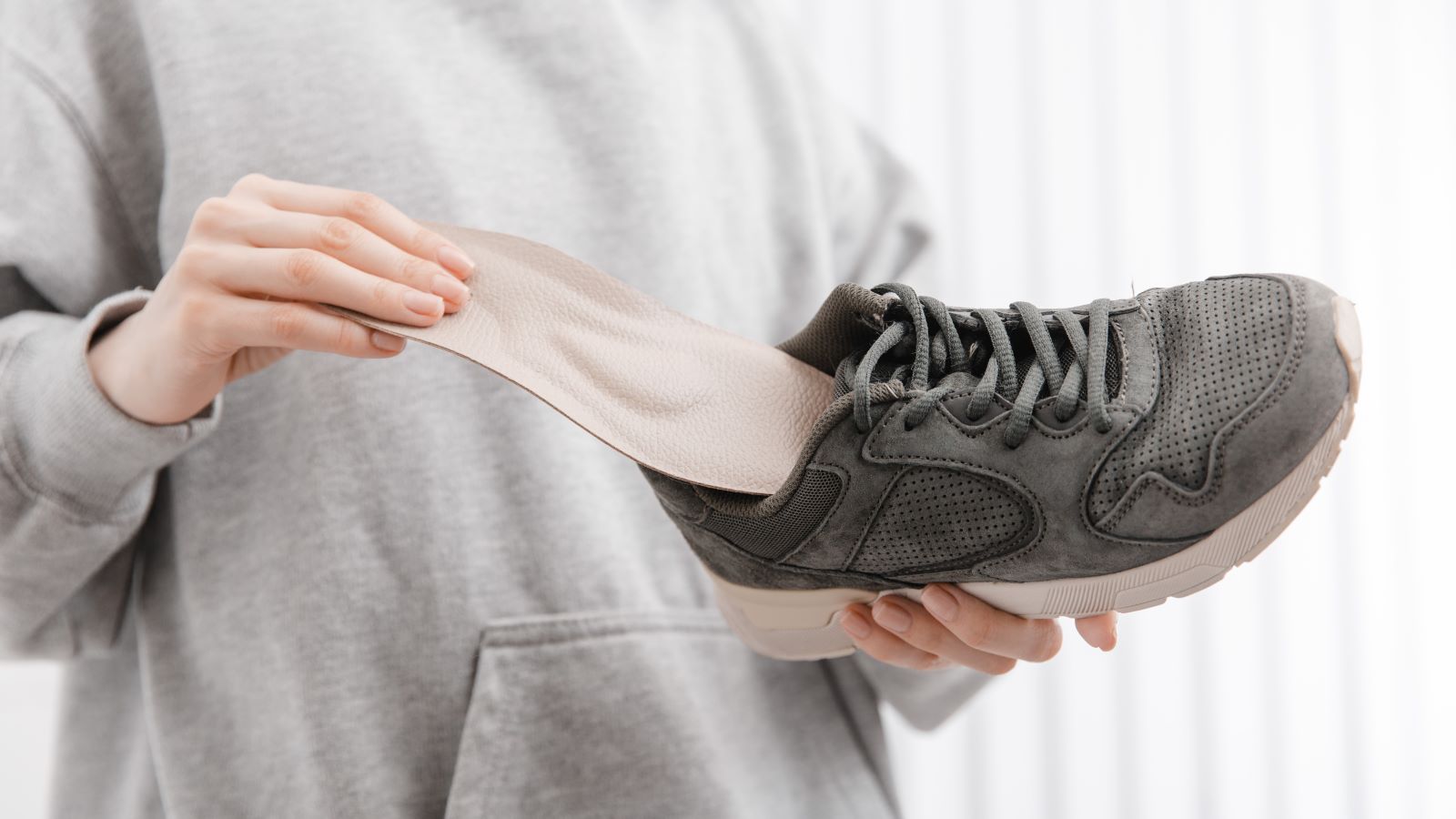<< Back
4 Signs You Could Benefit From Shoe Inserts

November 17, 2023
Shoe inserts aren’t just for the elderly. If you suffer from foot pain or discomfort – or pain when running or exercising – you may benefit from a pair.
“Orthotics are supportive inserts that provide multiple benefits when worn in a person’s shoes,” says Jeffrey DeLott, DPM, a podiatrist with the Connecticut Orthpaedic Institute at MidState Medical Center. “They provide support through the arch and reduce excessive motion, which helps redistribute pressure and improve foot function.”
How do you know if you could benefit from shoe inserts? Here are four signs to look for.
1. You have flat feet.
It may not seem like an issue, but flat feet are one of the most common reasons that people need shoe inserts.
“Flat feet cause people to overpronate or roll their feet inward when they walk. If not addressed, this can cause other issues like plantar fasciitis, tendonitis, shin splints, knee or back pain, and even osteoarthritis,” he says.
2. You have high arches.
On the other end of the spectrum, people with high arches may also benefit from shoe inserts.
Shoe inserts can address common issues caused by high arches including corns, calluses and balance issues.
3. You have a sharp pain in your heel or arch when you take the first few steps each morning.
If you experience sharp heel pain, especially in the morning, you may be suffering from plantar fasciitis – inflammation of the tissue that runs along the bottom of your food.
Shoe inserts may not be a cure for plantar fasciitis, but they can help ease symptoms.
> Related: Why Do My Knees Hurt in the Morning?
4. You have foot pain that limits your activities
Anytime you have foot pain that affects your day-to-day life or limits your activities, it’s a good idea to speak with a doctor.
You may or may not need shoe inserts, but a podiatrist can help diagnose and treat any foot injuries or issues.
Shoe inserts address biomechanical foot issues.
Shoe inserts – whether they’re off-the-shelf or custom made – correct biomechanical foot issues.
“Orthotics are not designed to correct an underlying deformity, but when worn with appropriate shoes, they can decrease symptoms and prevent injuries,” Dr. DeLott says. “They can also be used to cushion high-pressure areas and decrease pain.”
Orthotics should always be worn in pairs, too, to prevent balance issues or knee and hip symptoms, he says.
Off-the-shelf inserts work, but custom orthotics are the gold standard.
Some patients will find support and comfort with off-the-shelf inserts, especially those sold at running or athletic stores, Dr. DeLott says. He recommends such brands as Superfeet, Powerstep or Currex.
“Custom orthotics, however, are much more functional and tailored to each patient’s specific foot type and condition. It’s worthwhile to visit a podiatrist for that level of care,” he says.